Pilates instructor recommends these 5 moves to undo the damage of sitting at a desk all day
Soothe a stiff neck, spine and hips from hunching over a laptop
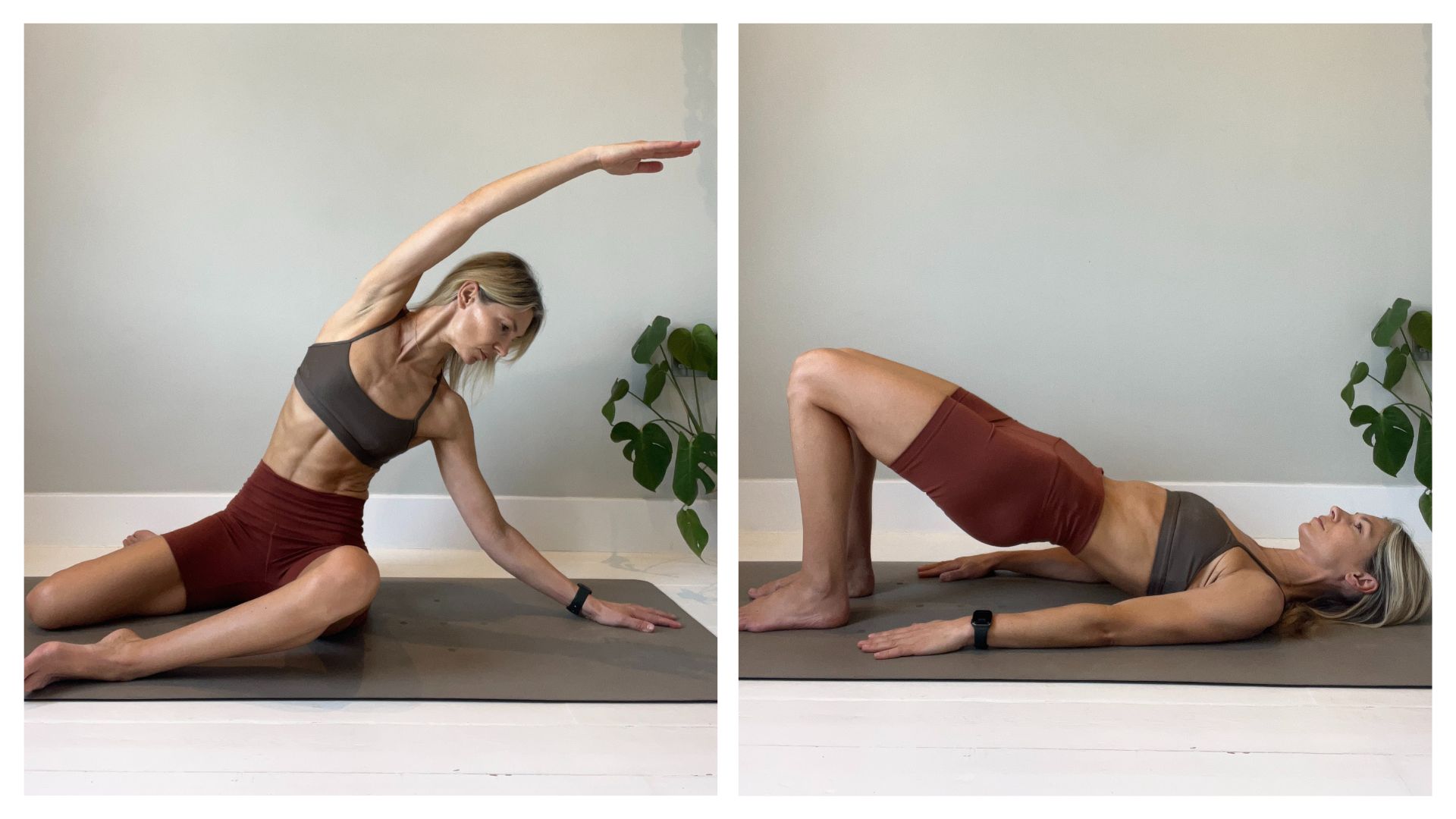
How much time have you spent sitting down this week? Whether you’re hunched over one of the best laptops, kicking back on the couch, or driving, it’s the default position. But excessive sitting can have unwanted effects on your body.
“Physiologically, there are many reasons that our joints and muscles might feel stiff and sore after prolonged periods of sitting,” explains Pilates instructor and Shape Pilates founder Gemma Folkard. “One of the major reasons for aches and pains is the actual position sitting puts us in.
“The body is unbalanced, with the hip flexors and muscles in the front of the neck becoming tight from being in a shortened position for a long time. Meanwhile, the muscles that stabilize the spine, such as the abdominals and the glutes, can become weak from underuse.”
Luckily, one of the easiest ways to fight this is free: you simply need to move. To help you soothe your stiff joints and sore muscles after a long day at the (home) office, Folkard has shared a five-move routine that you can do in just 10 minutes.
How to do Gemma Folkard’s Pilates routine for a stiff neck, hips and spine
- Spine stretch forward x 5
- Spine twist x 5 each side
- Shoulder bridge x 6-8
- Lateral stretch x 4-6 on each side
- Extension with Pilates ball – 60 seconds
Perform the exercises above in order. Complete all prescribed repetitions for each move before progressing to the next one. Where possible, try to transition smoothly between the exercises. Take note of Folkard’s cues about correct form below, to ensure you get the most out of each move.
1. Spine stretch forward
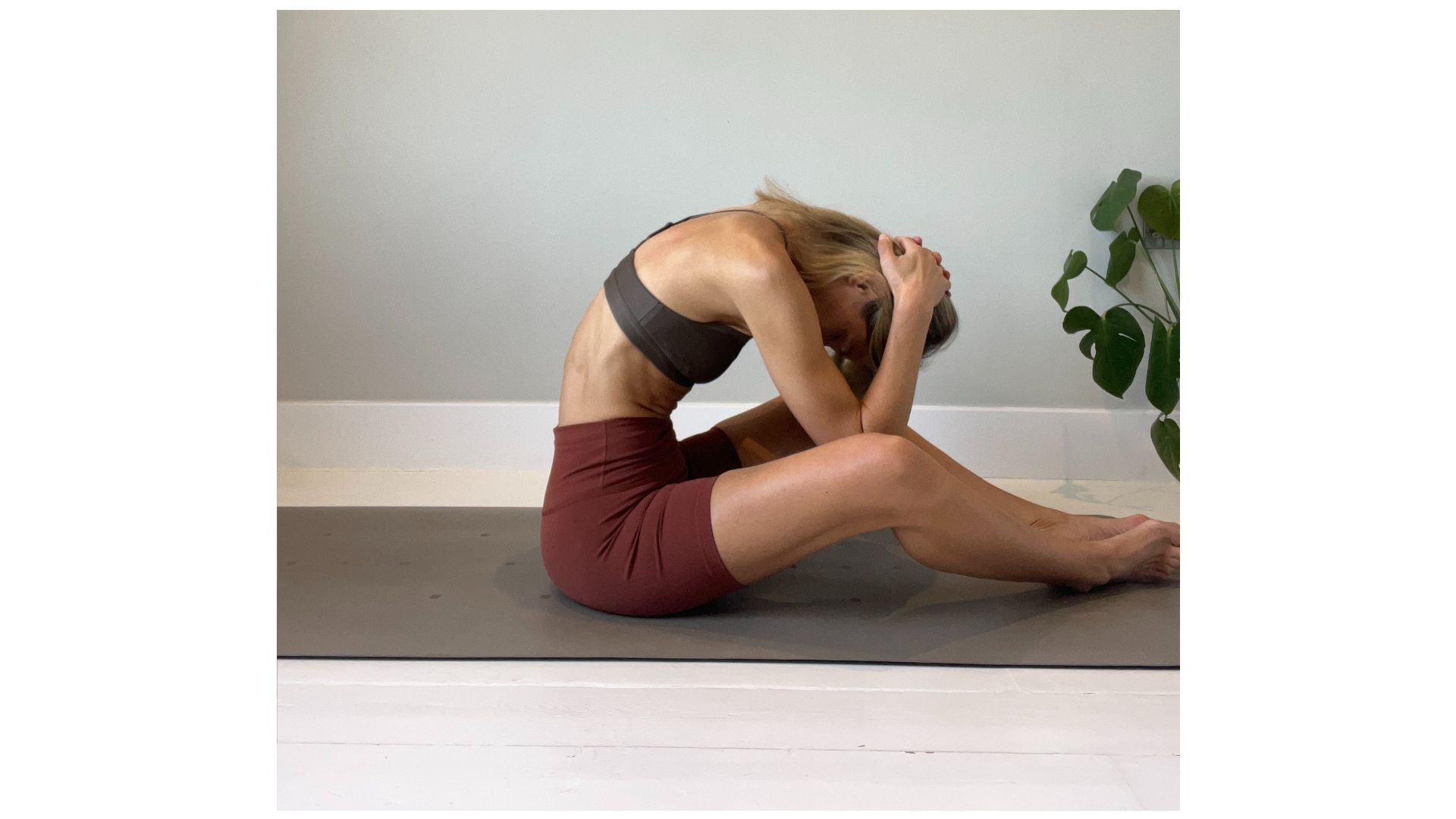
Repetitions: 5
- Sit on the floor with your legs out in front of you.
- Bring the soles of your feet together and let your knees drop to each side to open the hips, then sit nice and tall. This is your starting position.
- Bring your hands behind your head and flex (bend) forward, pulling the ribs back and allowing the weight of the hands and elbows to drop into the back of the head.
- You should feel a stretch down the back of your neck and spine. It may even reach into your hips and calves, Folkard says.
- Slowly lift your head, open your elbows out to your sides and puff your chest forward. Repeat this sequence five times.
2. Spine twist
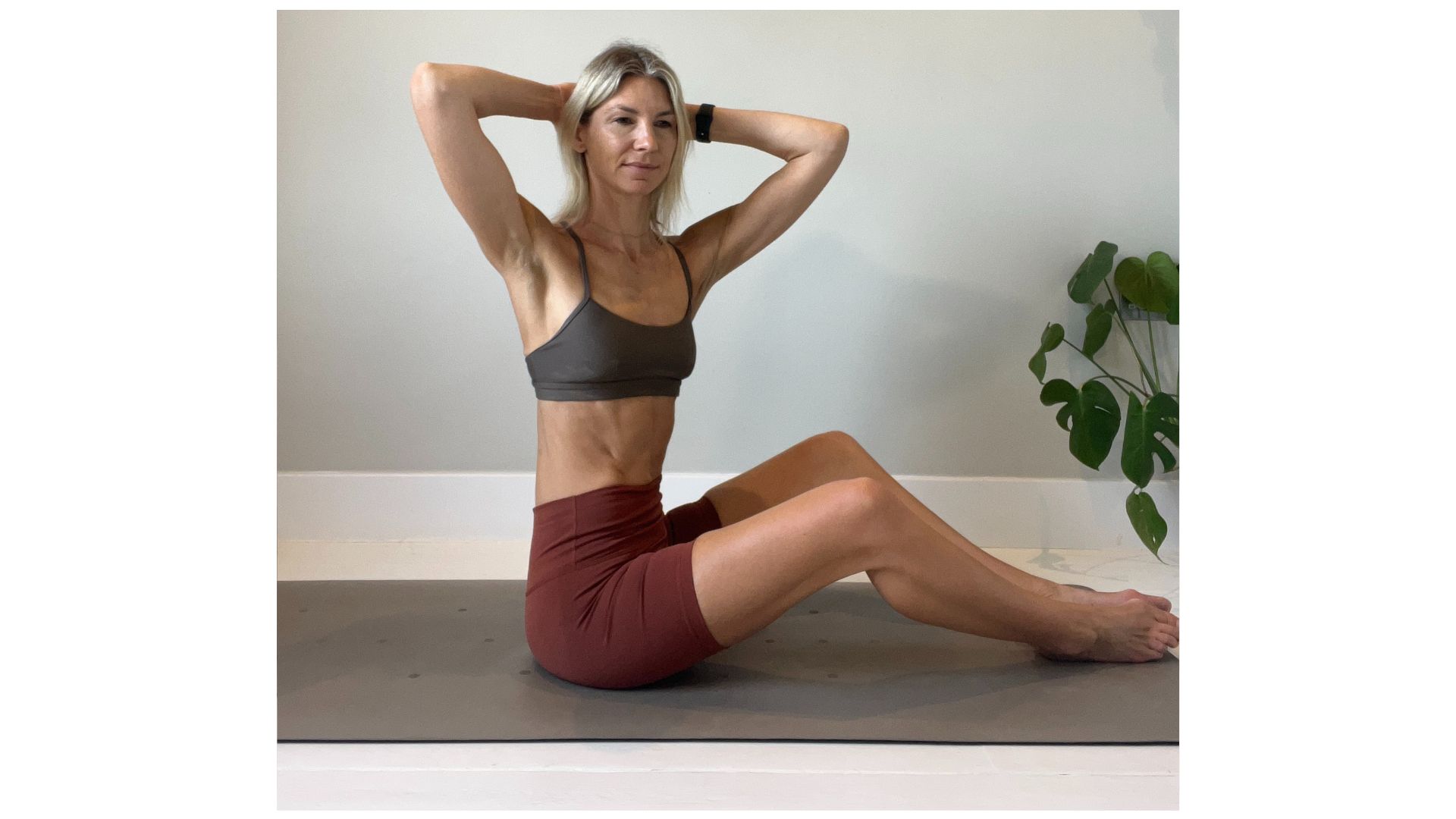
Repetitions: 5 on each side
Sign up for breaking news, reviews, opinion, top tech deals, and more.
- When you finish your final spine stretch forward, stay sitting upright with your hands on the back of your head and your elbows out to the side.
- Turn slowly to the left, then right, making sure that you’re rotating from your lower ribs. Engage the abdominal muscles and avoid leaning, remaining as upright as possible. This will open up the mid back.
- Perform this move five times on each side.
3. Shoulder bridge
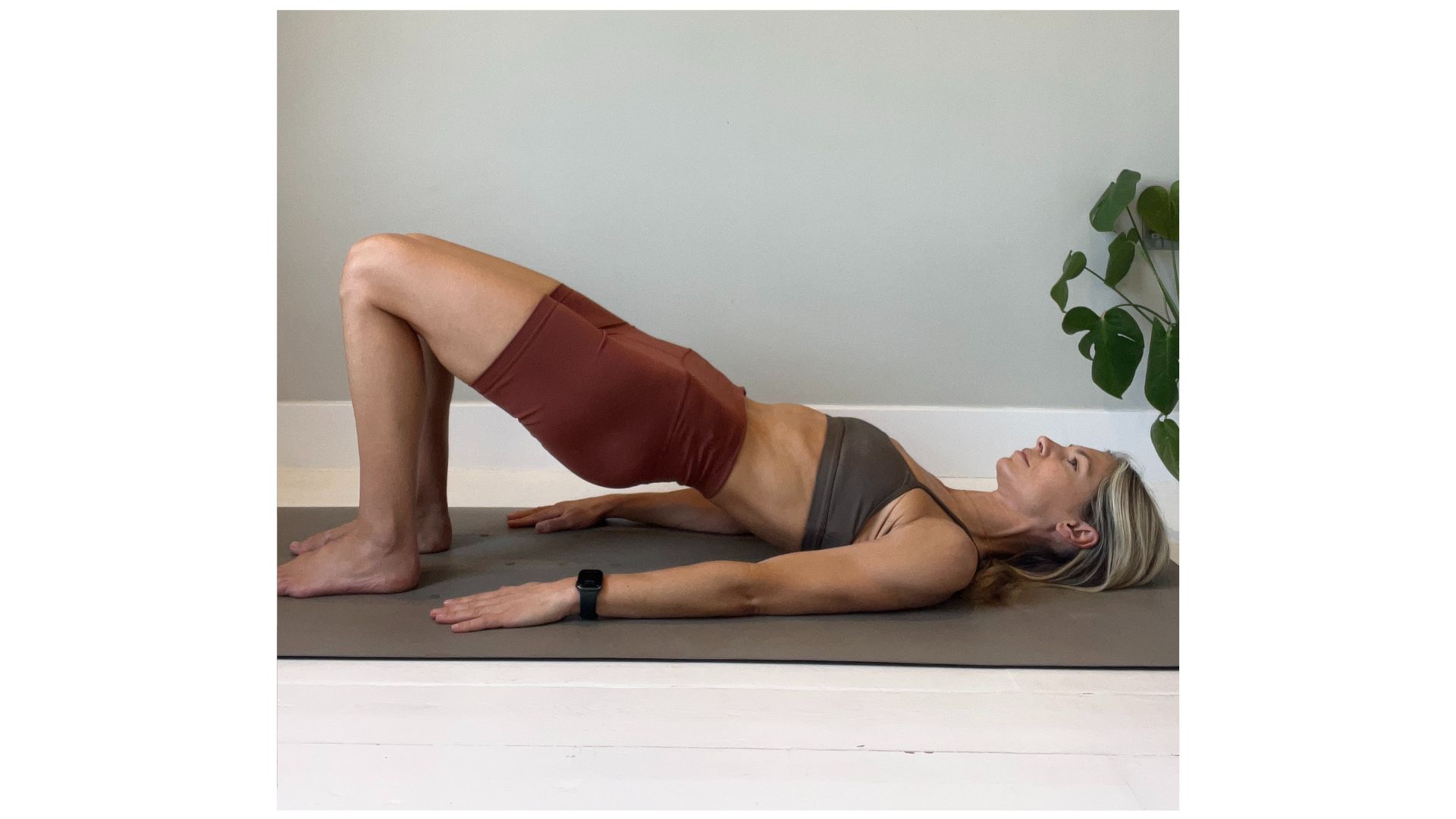
Repetitions: 6-8
- Extend your legs out in front of you, then bend at your knees to plant your feet flat on your mat, roughly hip-width apart. Your shins should be vertical.
- Place your arms flat on the mat either side of you, palms down, for support.
- Curl your tailbone underneath you to lift up your hips and strengthen the lower back.
- Keeping your ribs tucked in, press through your feet and use your glutes and hamstrings (the muscles in your backside and on the back of your thighs) to press your hips upward until your thighs and torso form a straight line.
- Slowly lower your hips back to the ground, then repeat six to eight times.
- This move will “open the front body, including those shortened hip flexors, and wake up the back body, which might have fallen asleep,” Folkard says.
4. Lateral stretch
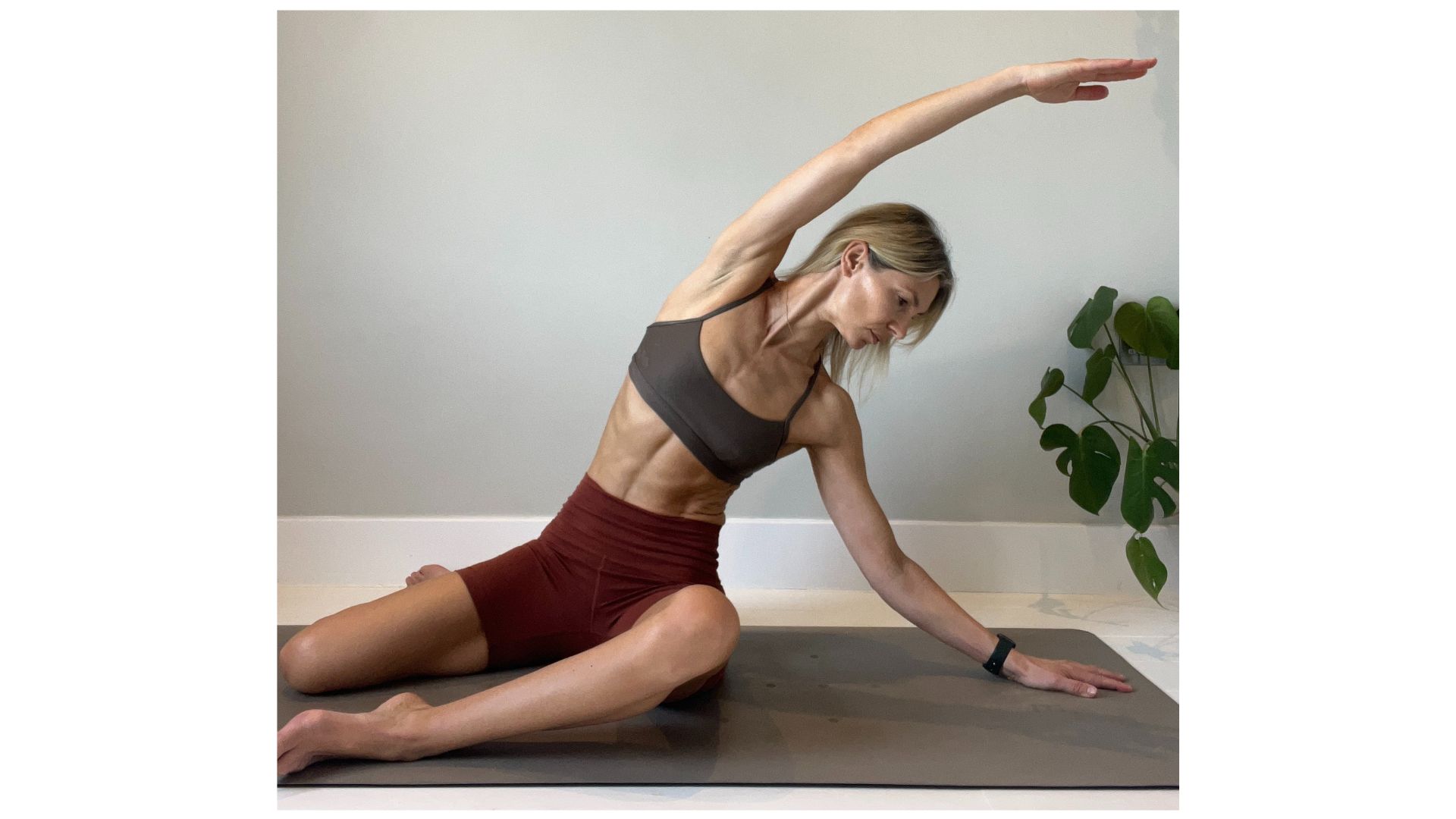
Repetitions: 4-6 on each side
- Sit upright and bring your knees into a zigzag position. To do this, bring your left thigh directly in front of you and form a right angle at the knee so your lower-left shin is running across your body. Bring your right thigh out to your side, and form a right angle at the knee so your right shin is extending behind you.
- Place your left hand on the mat to your left side for support, then reach your right hand over your head and lean to your left.
- Slowly return to center, keeping your legs as they are. Repeat this sequence for four to six repetitions, then switch legs and repeat on the other side.
5. Extension with Pilates ball
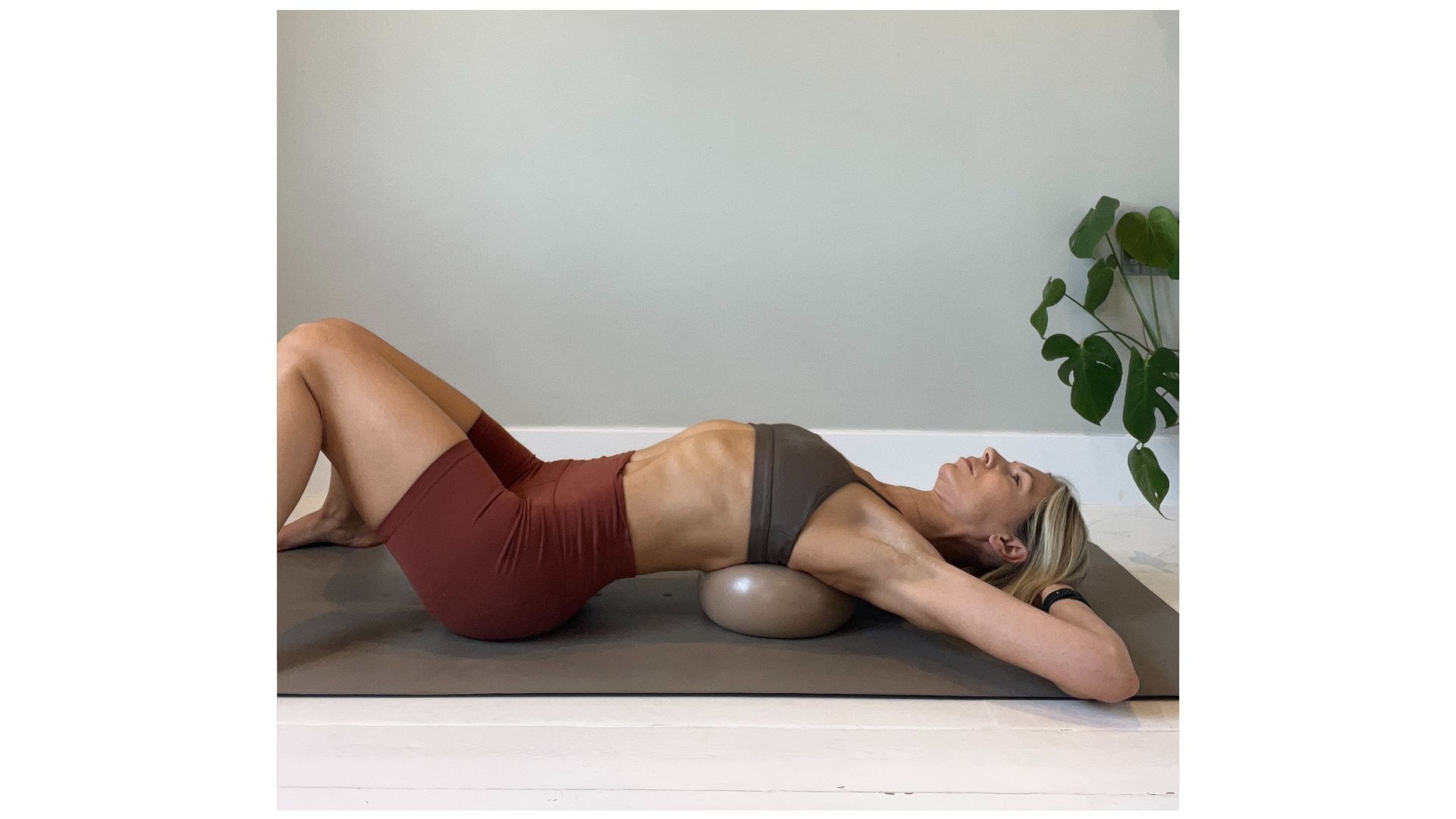
Repetitions: 60 seconds
- “A Pilates ball is the best thing you can buy to avoid the postural hunch,” says Folkard. Place it on your mat and lie on top of it, facing upwards, so it sits in the middle of the upper back, just below the shoulder blades (or somewhere that’s comfortable for you).
- Let your upper back arch over the ball. If this stretch feels too intense, you can reduce the amount of air in the ball or place a pillow under your head.
- Keep your feet mat-distance apart and allow your knees to gently fall together.
- Try to relax by using your breath and gently encouraging the chest to open.
How does movement fight the effects of too much sitting down?
When I think of brain power, my mind jumps to people solving complex math equations or making scientific breakthroughs. But Folkard points out that, according to Nobel Prize winner Dr Roger Sperry, “90% of the brain’s stimulation and nutrition to the brain is generated by movement of the spine”.
“It makes sense, then, that after a day at our desk we might feel physically and mentally depleted,” Folkard says. “A static posture also reduces blood flow, causing a lack of [supply of the] oxygen and nutrients muscles need to feel their best.”
Movement is the obvious solution to this, and it doesn’t have to be an intense HIIT class or gut-busting run, to have an effect.
The body moves in three planes of motion: the sagittal plane (up, down, forward and backward), the frontal plane (side-to-side movements), and the transverse plane (rotational movements). Folkard says your body needs movement in all three planes throughout the day to keep it running smoothly, and her routine covers all bases.
“If moving in different planes each day sounds like a lot of work, it’s not!” she says. “It can be this routine, or even basic moves such as picking things up off the floor, walking, turning – all those natural movements that sitting at a desk removes from your day.”
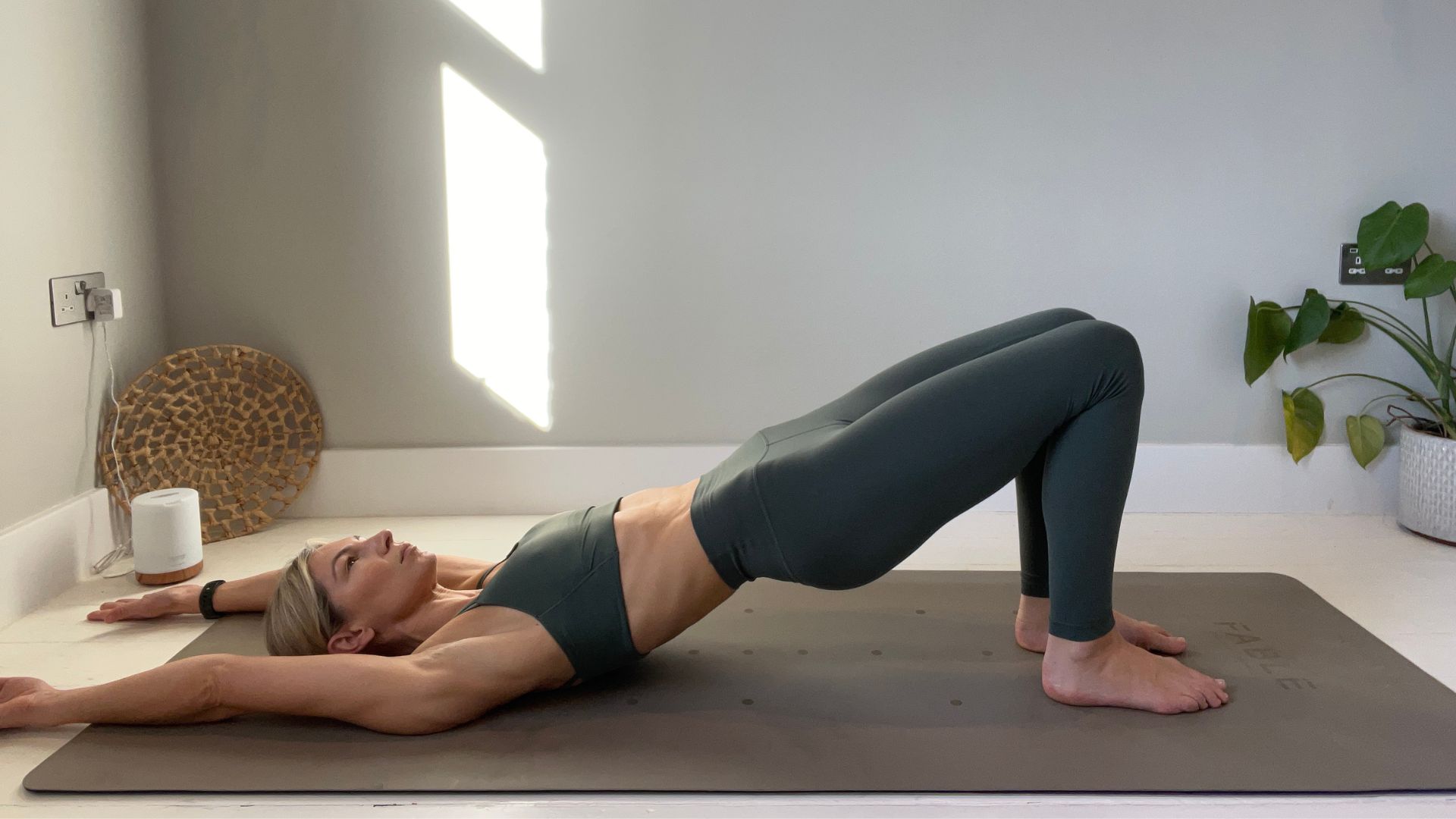
A sedentary lifestyle has also been linked to other negative health outcomes. The World Health Organization’s (WHO) 2020 guidelines on sedentary behavior state: “In adults, higher amounts of sedentary behavior are associated with detrimental effects on… all-cause mortality, cardiovascular disease mortality and cancer mortality, and incidence of cardiovascular disease, Type 2 diabetes and cancer.”
However, upping your activity levels can counter this. The WHO guidelines say “some physical activity is better than none”, and “many of the benefits of physical activity” can be seen from 150-300 minutes of moderate-intensity physical activity per week week, 75-150 minutes vigorous-intensity physical activity per week, or an equivalent cocktail of the two.
Meanwhile, research published in the British Journal of Sports Medicine in 2023 concluded that, in a 13-year study of 11,989 participants aged 50 and above, “sedentary time was associated with higher mortality risk, but only in individuals accumulating less than 22 minutes of moderate to vigorous physical activity (MVPA) per day”.
“Higher MVPA levels were associated with lower mortality risk, irrespective of the amount of sedentary time,” it adds.
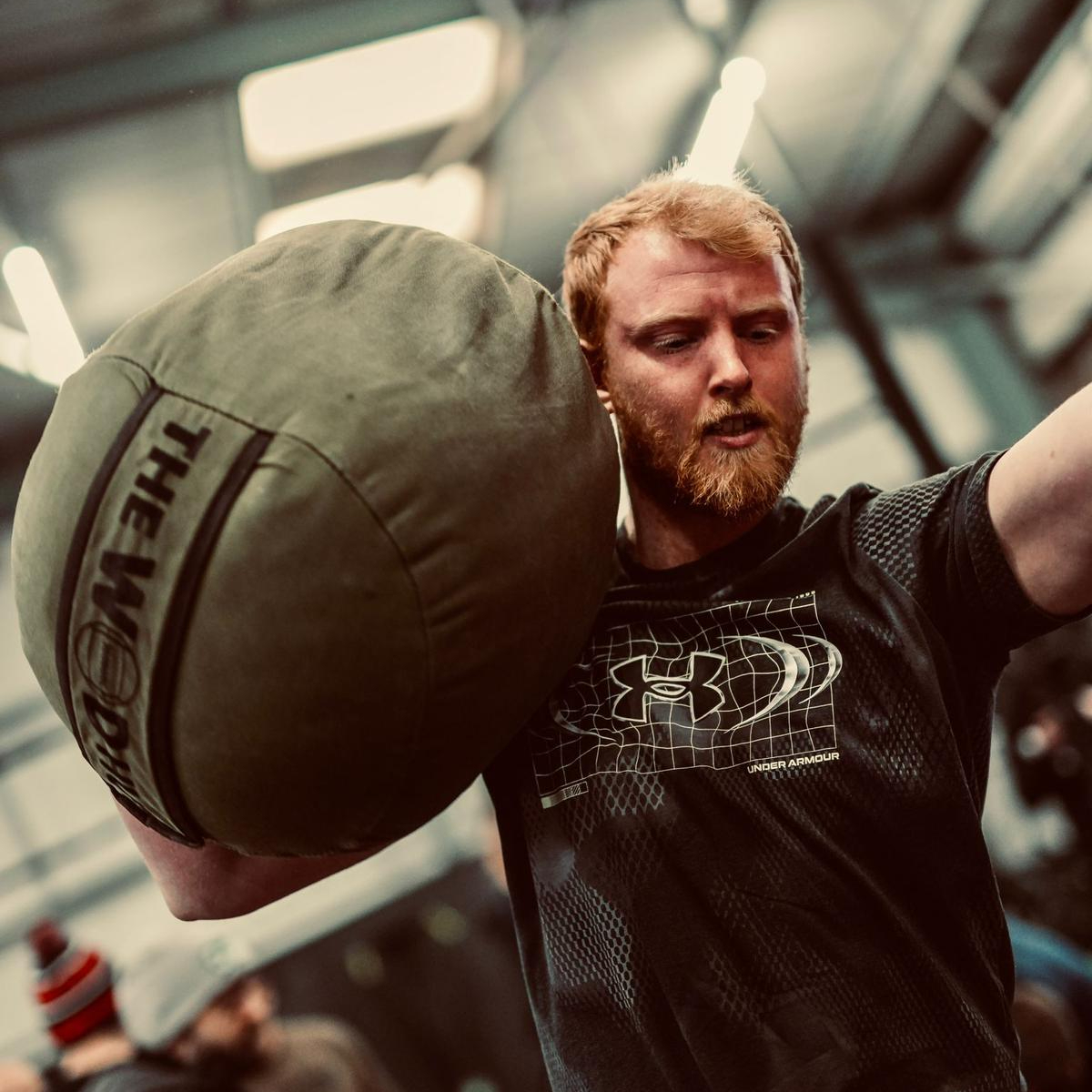
Harry is a huge fan of picking things up, putting them down again and writing about it, which uniquely qualifies him for the position of fitness and wearables writer with TechRadar.
He’s an NCTJ-qualified journalist with a degree in English and journalism and several years’ experience covering the health and fitness beat. This has involved writing for the likes of Men’s Health, Women’s Health, Runner’s World, Fit&Well, Live Science and Coach.
Harry is passionate about all things exercise-related, having spent more than a decade experimenting with a wide range of training styles. He's used strength training, bodybuilding, Pilates, powerlifting, gymnastics, rowing, yoga, running, calisthenics, CrossFit and more to build a fit, functional body (and have fun while doing it).
When he’s not writing or training, he can usually be found racing his dog Archie up scenic hills in the south west of England or working to complete his NASM-certified personal trainer qualification.